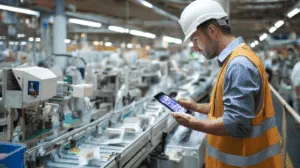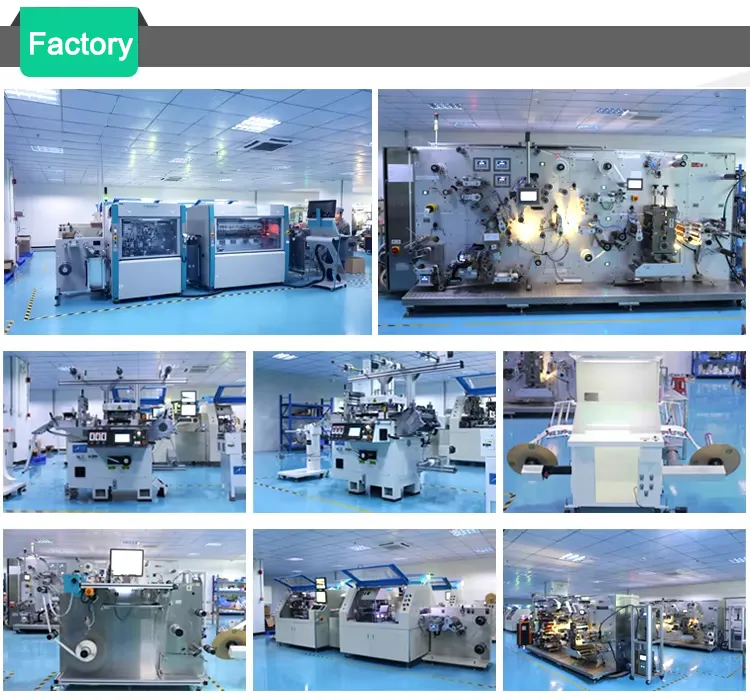Introduction
Efficient textile management is a critical element in commercial laundry, hotel linen handling, and healthcare garment processing. Traditional methods—manual sorting, barcode scanning, and handwritten logs—often result in inventory errors and losses.
The introduction of RFID laundry tag systems has changed this operational landscape. By embedding durable RFID tags into linens and garments, laundries can automatically identify, track, and record every textile’s movement throughout its lifecycle.
1. What Is an RFID Laundry Tag
An RFID laundry tag is a small, electronically encoded device integrated into fabric items to allow contactless identification. It typically contains three components:
- Microchip: stores a unique identification number.
- Antenna: enables communication with RFID readers.
- Encapsulation: protects the internal components against water, heat, pressure, and detergents.
RFID laundry tags operate in HF (13.56 MHz) or UHF (860–960 MHz) frequency ranges. UHF models are commonly used in large-scale laundries for their long reading distance and ability to scan hundreds of items simultaneously.
2. Types of RFID Laundry Tags
2.1 Sew-In RFID Tags for Uniforms
These tags are stitched into uniforms or workwear garments. They remain fixed through multiple wash cycles and provide long-term identification. Suitable for hospitality and industrial uniforms.
2.2 Heat-Seal RFID Tags for Flat Linens
Heat-seal tags attach to sheets, towels, and pillowcases. They are thin, flexible, and resistant to ironing and tumble drying.
2.3 PPS or Silicone-Encapsulated Tags for Heavy-Duty Environments
Industrial laundries and hospitals often require high-temperature and chemical-resistant tags. Encapsulated tags can survive over 200 washing and sterilisation cycles without degradation.
3. Core Features and Technical Parameters
A reliable RFID laundry tag must perform consistently under demanding mechanical and thermal stress. Key parameters include:
| Feature | Description | Typical Value |
|---|---|---|
| Operating Frequency | HF 13.56 MHz or UHF 860–960 MHz | Global standards (ISO 15693 / ISO 18000-6C) |
| Read Range | 10 cm (HF) – 6 m (UHF) | Dependent on reader power |
| Temperature Resistance | Up to 200 °C (392 °F) | For ironing and drying |
| Wash Cycle Endurance | 200 – 300 cycles | Depending on design |
| Waterproof Rating | IP68 – IP69K | Full immersion protection |
| Material | PPS, silicone, woven polyester | Chemical-resistant |
| Data Capacity | 96 bit – 512 bit EPC memory | Item identification |
4. Working Principle
The working mechanism of an RFID laundry tag is based on radio frequency identification.
When a tagged textile passes within range of an RFID reader, electromagnetic energy from the reader powers the tag’s chip, which then transmits its unique ID. The system software logs the data to record item location, usage count, and wash history.
Key elements of the system include:
- RFID tags attached to each textile.
- Readers and antennas installed at sorting stations, washing lines, and dispatch points.
- Middleware software connecting RFID data to ERP or laundry-management systems.
5. Advantages of Using RFID Laundry Tags
5.1 Accuracy and Automation
Manual counting often leads to errors. RFID systems automatically detect all tagged items, achieving near-100 % accuracy.
5.2 Labour Efficiency
Bulk scanning allows thousands of items to be read in seconds. Staff time is reduced, improving throughput.
5.3 Loss Prevention
Every tag carries a unique ID, enabling precise monitoring of lost or stolen items.
5.4 Lifecycle Management
Tags record usage and wash cycles, providing data to determine replacement schedules based on real wear rather than estimation.
5.5 Hygiene and Traceability
In healthcare environments, RFID ensures that contaminated or over-used textiles are not reissued before sterilisation.
6. Industrial Applications
6.1 Hospitality Sector
Hotels use RFID to manage linens and towels efficiently. Each item’s location—from room service to laundry return—is logged automatically.
6.2 Healthcare Sector
Hospitals and clinics track scrubs, bed sheets, and gowns through sterilisation and washing cycles. The traceability supports hygiene audits and reduces losses.
6.3 Workwear and Rental Services
Uniform rental companies apply RFID tags to track inventory assigned to specific clients, ensuring accountability and reducing shrinkage.
7. Implementation Considerations
7.1 Tag Selection
Choose tag type based on textile composition, washing process, and temperature exposure. For example, silicone tags are better for industrial washers; woven tags are ideal for uniforms.
7.2 Attachment Method
Proper sewing or heat-sealing techniques prevent tag damage. Avoid stitching through the chip area.
7.3 Reader Infrastructure
Install readers at collection and dispatch points for automated scanning. Ensure antenna placement avoids interference from metal carts or water.
7.4 Software Integration
Integrate RFID data with existing ERP, inventory, or billing systems for seamless reporting and analytics.
7.5 Cost and ROI
Although tag and reader costs add upfront expense, most laundries achieve ROI within 12–24 months through reduced losses and labour savings.
8. Maintenance and Lifecycle
RFID laundry tags require minimal maintenance. Periodic inspection ensures tags remain attached and undamaged. Data analysis helps detect anomalies such as unreturned items or excessive wash counts. Replacement intervals depend on material fatigue and operational intensity.
9. Future Development Trends
9.1 Integration with IoT and Cloud Systems
RFID data can connect to IoT platforms for predictive analytics—tracking asset utilisation, wash frequency, and replacement patterns.
9.2 Sustainability Metrics
By extending textile life and reducing waste, RFID contributes to sustainability targets in commercial laundries.
9.3 Smart Clothing and Embedded RFID Chips
The next generation of rfid chip clothing integrates directly into garment fabric during manufacturing, allowing continuous tracking and automated service records.
10. Conclusion
The RFID laundry tag has become a standard component in modern textile management. It delivers high efficiency, cost control, and traceability for sectors that depend on large textile inventories—particularly hospitality, healthcare, and industrial laundry.
By selecting suitable tag materials, implementing robust reading infrastructure, and integrating data analytics, organisations can achieve full visibility of every item’s movement and usage lifecycle.
11. FAQ Section
Q1. How many washing cycles can an RFID laundry tag endure?
Most industrial tags can withstand 200–300 wash cycles depending on temperature and detergent concentration.
Q2. Can RFID laundry tags be reused?
Yes, tags are permanently attached to textiles and remain functional throughout the item’s service life.
Q3. What is the difference between HF and UHF laundry tags?
HF tags offer short-range, interference-resistant performance; UHF tags allow long-range bulk reading suitable for large facilities.
Q4. Are RFID laundry tags safe for skin contact?
Yes, they are manufactured using non-toxic, hypoallergenic materials compliant with safety standards.
Q5. What is the typical return on investment?
Depending on operation scale, ROI is typically reached within 12–24 months through labour reduction and inventory control improvements.




